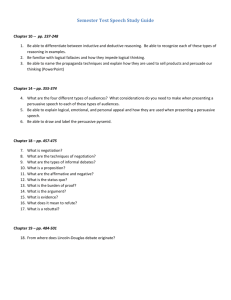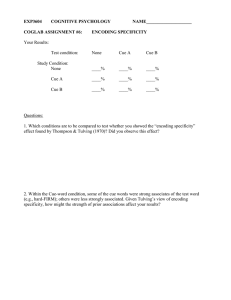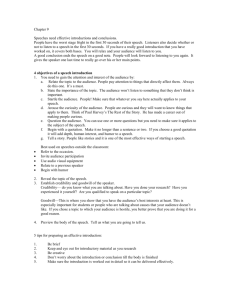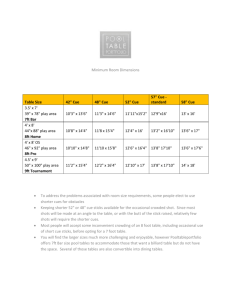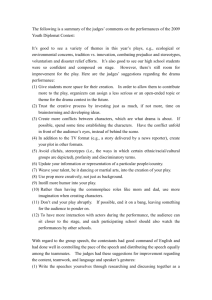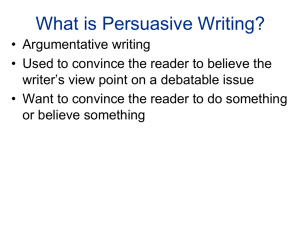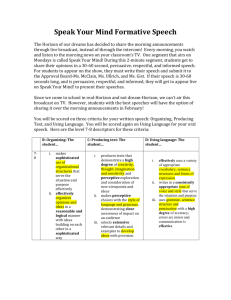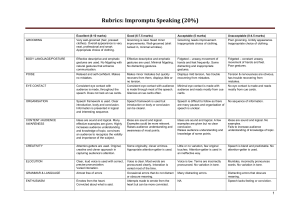Speech Competition Guidelines: Persuasive Speaking Tips
advertisement
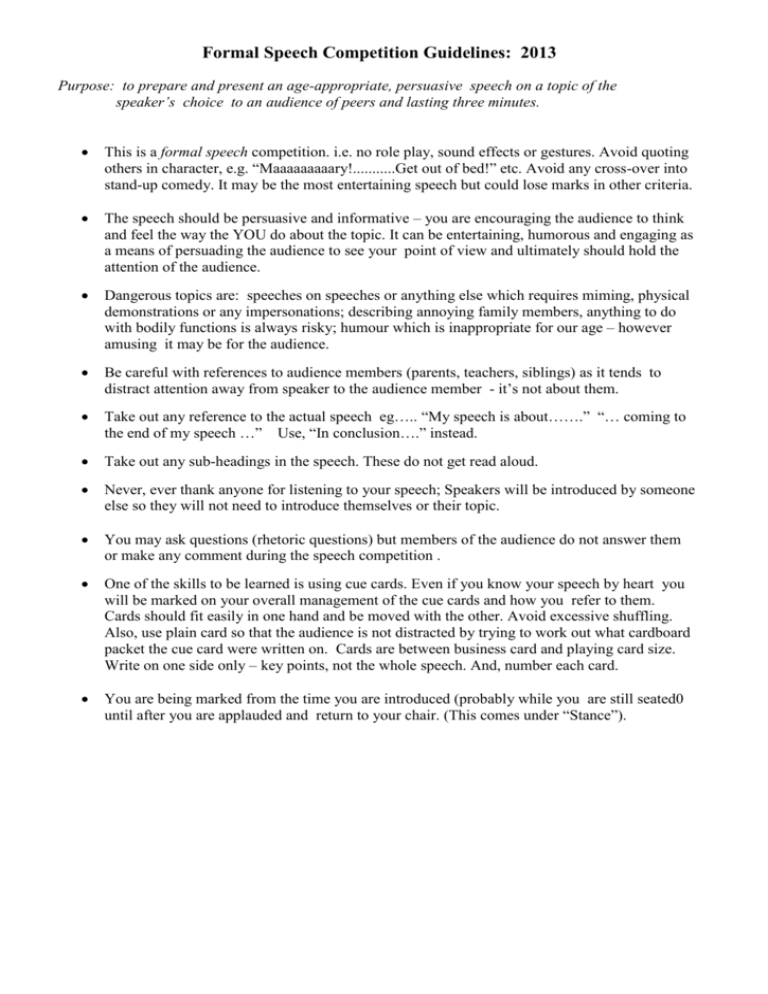
Formal Speech Competition Guidelines: 2013 Purpose: to prepare and present an age-appropriate, persuasive speech on a topic of the speaker’s choice to an audience of peers and lasting three minutes. This is a formal speech competition. i.e. no role play, sound effects or gestures. Avoid quoting others in character, e.g. “Maaaaaaaaary!...........Get out of bed!” etc. Avoid any cross-over into stand-up comedy. It may be the most entertaining speech but could lose marks in other criteria. The speech should be persuasive and informative – you are encouraging the audience to think and feel the way the YOU do about the topic. It can be entertaining, humorous and engaging as a means of persuading the audience to see your point of view and ultimately should hold the attention of the audience. Dangerous topics are: speeches on speeches or anything else which requires miming, physical demonstrations or any impersonations; describing annoying family members, anything to do with bodily functions is always risky; humour which is inappropriate for our age – however amusing it may be for the audience. Be careful with references to audience members (parents, teachers, siblings) as it tends to distract attention away from speaker to the audience member - it’s not about them. Take out any reference to the actual speech eg….. “My speech is about…….” “… coming to the end of my speech …” Use, “In conclusion….” instead. Take out any sub-headings in the speech. These do not get read aloud. Never, ever thank anyone for listening to your speech; Speakers will be introduced by someone else so they will not need to introduce themselves or their topic. You may ask questions (rhetoric questions) but members of the audience do not answer them or make any comment during the speech competition . One of the skills to be learned is using cue cards. Even if you know your speech by heart you will be marked on your overall management of the cue cards and how you refer to them. Cards should fit easily in one hand and be moved with the other. Avoid excessive shuffling. Also, use plain card so that the audience is not distracted by trying to work out what cardboard packet the cue card were written on. Cards are between business card and playing card size. Write on one side only – key points, not the whole speech. And, number each card. You are being marked from the time you are introduced (probably while you are still seated0 until after you are applauded and return to your chair. (This comes under “Stance”). Guidelines from the APPA Speech Competition for Years 5 – 8: Speech Construction Introduction, body of speech, conclusion Organisation of the speech Main points developed well Presentation and Delivery Facial and body gestures must enhance not distract from the speech Use of eye-contact Relaxed stance Use of pause to allow the audience to assimilate the message Variety of pace Content of Speech The message of the speech Is it relevant, meaningful clear and concise? Does it have the audience “hooked”? Language The use of grammar, punctuation and word selection to enhance The use of visual imagery to ensure that the message is delivered Effectiveness The impact on the audience Adjudicators will be watching and assessing the audience’s reaction Vocal Inclination Modulation and volume of voice in delivery of the speech Vocal interest

